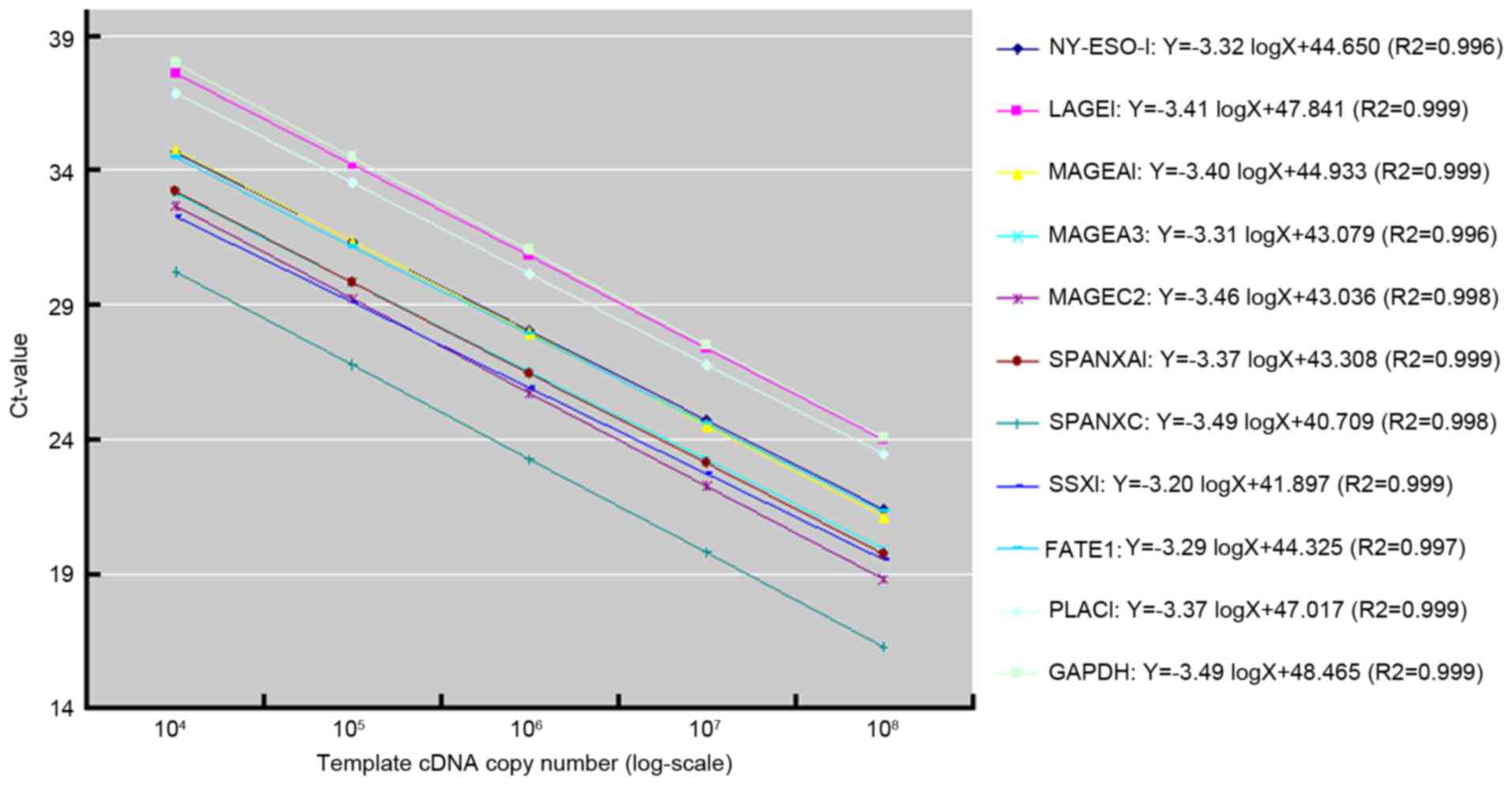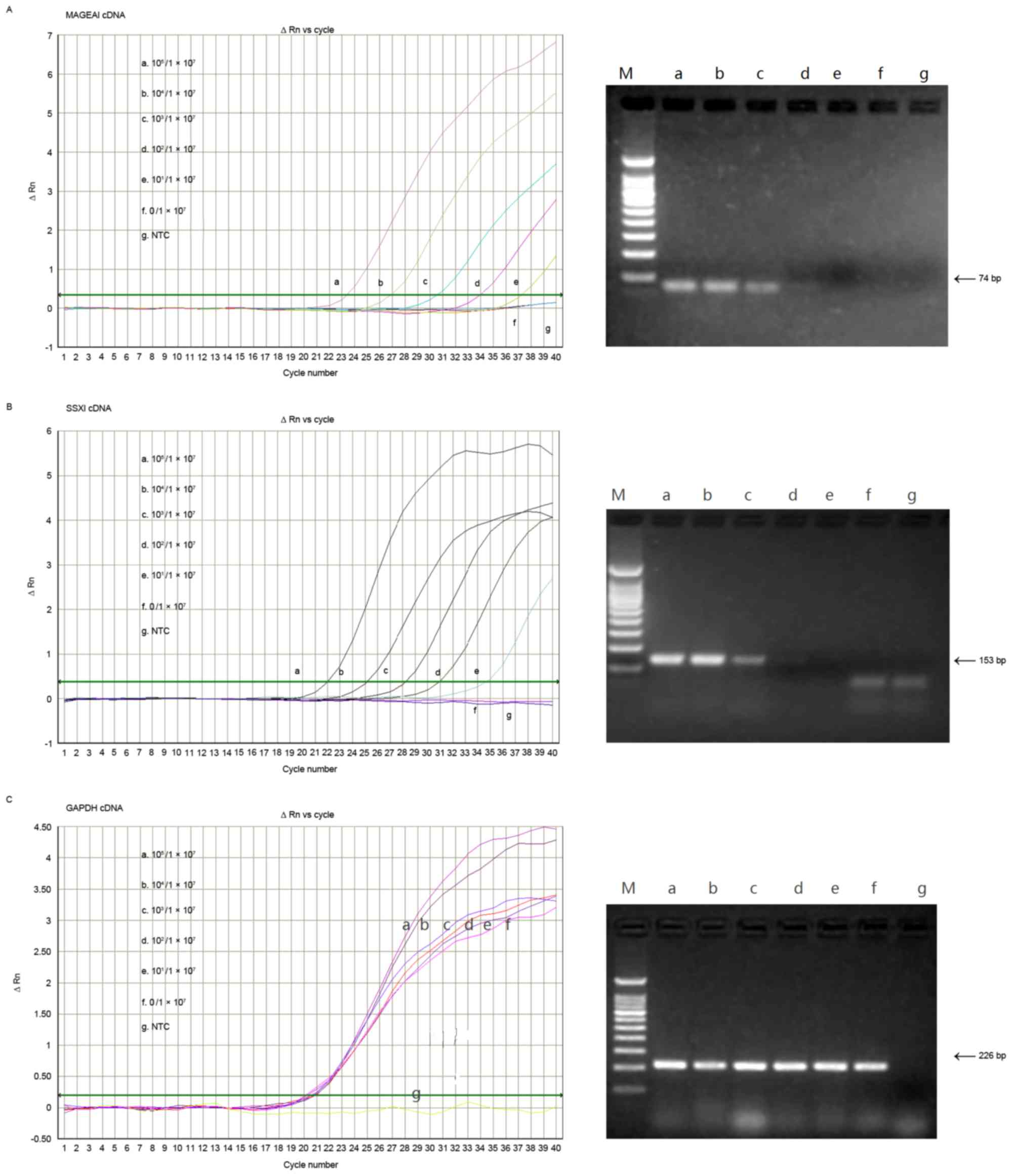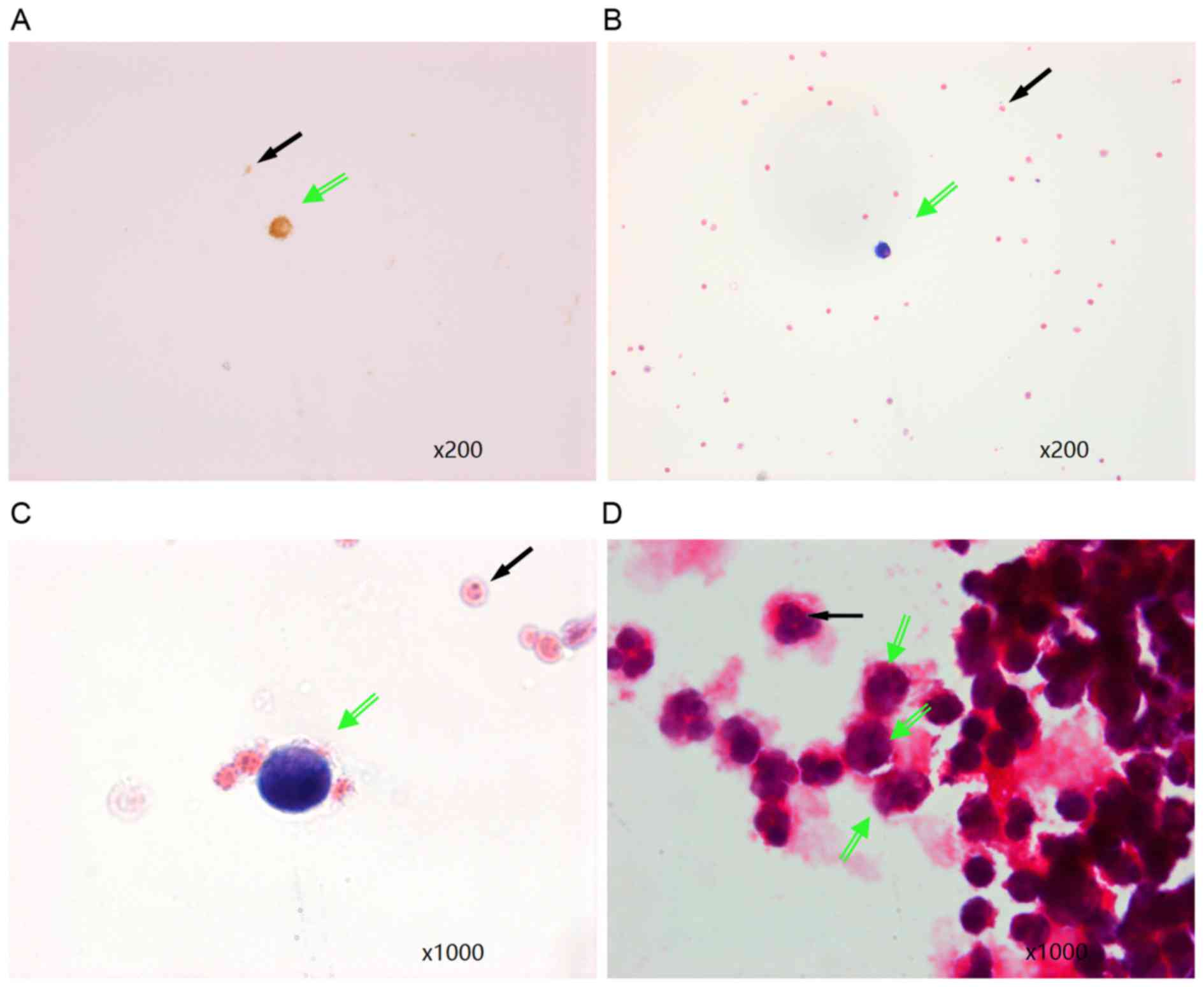Detection of circulating tumor cells by reverse transcription‑quantitative polymerase chain reaction and magnetic activated cell sorting in the peripheral blood of patients with hepatocellular carcinoma
- Authors:
- Published online on: August 28, 2017 https://doi.org/10.3892/mmr.2017.7372
- Pages: 5894-5900
-
Copyright: © Guo et al. This is an open access article distributed under the terms of Creative Commons Attribution License.
Metrics: Total
Views: 0 (Spandidos Publications: | PMC Statistics: )
Total PDF Downloads: 0 (Spandidos Publications: | PMC Statistics: )
Abstract
Hepatocellular carcinoma (HCC) is one of the most lethal malignancies worldwide. Circulating tumor cells (CTCs) are considered a major cause of recurrence and metastasis in cancer; however, the detection of CTCs is challenging owing to their very low numbers in peripheral blood (around 10 CTCs per 1,000,000 erythrocytes). Cancer‑testis antigens (CTAs) are specific tumor markers for CTCs. The present study aimed to evaluate the sensitivity and specificity of reverse transcription‑quantitative polymerase chain reaction (RT‑qPCR) for the detection of nine CTAs as well as placenta‑specific antigen 1 (PLAC1) in peripheral blood mononuclear cell (PBMC) samples collected from 51 patients with HCC. The effectiveness of magnetic‑activated cell sorting (MACS) for tumor‑cell enrichment, through the depletion of CD45+ leukocytes in PBMC samples, was also assessed. Immunocytochemistry along with hematoxylin and eosin staining demonstrated that RT‑qPCR achieved an overall positive detection rate for CTAs and PLAC1 of 70.6%; the highest rates were observed for melanoma‑associated antigen A3 (MAGEA3), synovial sarcoma X breakpoint 1, MAGEA1, NY‑ESO‑1, L antigen 1 and PLAC1. MACS‑detected intact CTCs in PBMCs were confirmed by H&E staining and morphological assessment; 12 out of 19 (63.2%) patients were identified as positive for CTAs. Screening for these five CTAs and PLAC1 by RT‑qPCR may offer a potentially valuable prognostic tool with good sensitivity and specificity in patients with HCC that may be enhanced by MACS.












